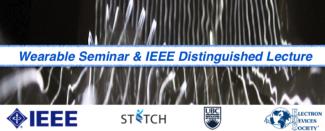Stitch Wearable Seminar & IEEE Distinguished Lecture
August 12, 2019, 3:00 pm to 4:00 pm

Ultra Low Power Transistor Architectures and Sensor Interfaces
Prof. Arokia Nathan
CTO, Cambridge Touch Technologies
Abstract - This talk will review the integration of oxides and fully printable organics for newly emerging application areas related to wearables and the Internet of Things. We will discuss the critical design considerations to show how device-circuit interactions should be handled and how compensation methods can be implemented for stable and reliable operation. In particular, the quest for low power becomes highly compelling in wearable devices. We will discuss transistor operation in the different regimes, and review device properties when operated in the deep sub-threshold regime or in near-OFF state, addressing the pivotal requirement of low supply voltage and ultra low power leading to potentially battery-less operation.
Biography - Professor Arokia Nathan leads a multi-disciplinary research group whose primary focus is on the heterogeneous integration of materials and processes, sensors, energy harvesting and storage devices pertinent to wearable technologies. Formerly a Chair Professor of Photonic Systems and Displays at the University of Cambridge, UK, he is currently the Chief Technical Officer of Cambridge Touch Technologies, a company spun out of the University developing advanced interactive technologies.